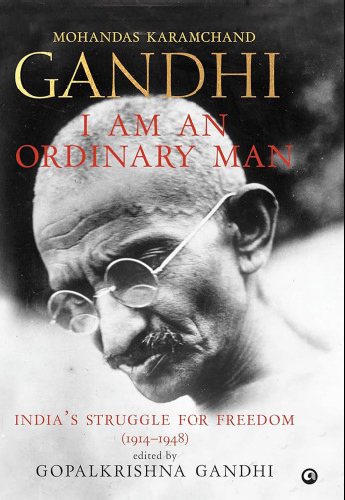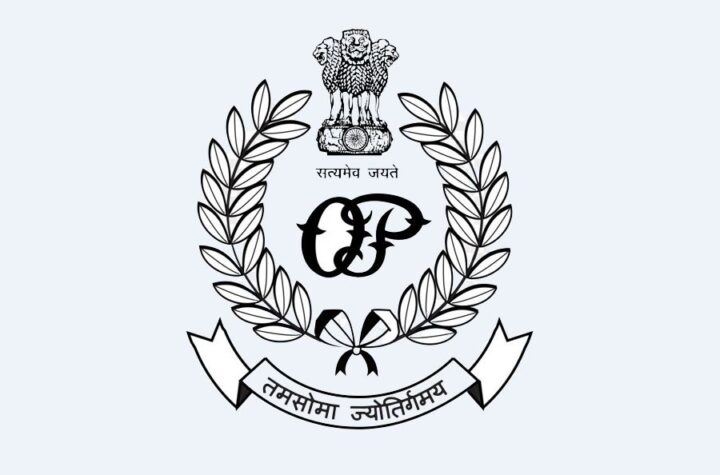Bhaskar Parichha I Am an Ordinary Man:India’s Struggle forFreedom (1914-1948)
Gopalkrishna GandhiAleph Book CompanyNew DelhiIn 1920, M.K. Gandhistopped writing his
autobiography, The Story of MyExperiments with Truth. Eventhough Gandhi gave up writinghis memoirs, he kept talkingabout his life, family, work,colleagues, those who opposed
him and admired him, his hopes,anxieties, challenges, fasts, jailstints, enthusiasms, and
disappointments. Theautobiographic observationsmade by Mahatma Gandhi,scattered throughout theCollected Works of MahatmaGandhi, as well as the memoirshe wrote during his lifetime,make up a compelling andpowerful narrative. WithGandhi’s own words,Gopalkrishna Gandhi was able to
reconstruct the book ‘Restless asmercury’. That is an accuratedescription.Continuing Mohandas K.
Gandhi’s story that began inRestless as Mercury: My Lifeas a Young Man, this bookconcludes his autobiography.The work tells the story ofGandhi’s life from his childhooduntil 1914, when, following thesatyagraha launched by him inSouth Africa to redress the unfairtreatment of Indians there, hereturned to India. This volumefollows Gandhi from the time hereturned to India to his final days,detailing his hopes, challenges,jail stints, fasts, relationship withhis family, and more.I Am an Ordinary Man : India’sStruggle for Freedom (1914-1948) by Gopalkrishna Gandhiis a veritable account of thestruggles the father of the nationled until his assassination.Gopalkrishna Gandhi studiedEnglish literature at St Stephen’s College, Delhi. A formeradministrator and diplomat, hetranslated The Tirukkural fromTamil, authored a novel, Refuge,and a play in English verse, DaraShukoh. He is currentlyDistinguished Professor atAshoka University.There are four sections to theaccount. In Book one (1914-18),Gandhi launches his firstsatyagraha in India with theindigo growers of Bihar. This isfollowed by an industrialsatyagraha with mill workers inAhmedabad. He then launchesthe movements for the exorcismof untouchability and for the
unification of Hindus andMuslims. The next sectiondescribes the beginnings of thenon-cooperation movement aswell as the adoption of Ahimsaas the highest of all beliefs,practices, and commitments.Gandhi’s focus remains onabolishing untouchability,resolving the Hindu-Muslimdispute, and mobilizing peopleto weave Khadi. Sedition is thecharge that lands him in prisonfor the first time in India.Protests against the SimonCommission (the committee that
was to suggest constitutionalreforms did not have a singleIndian member) result in lathi
charges, which galvanize themovement for the establishmentof the Indian state. A total
independence resolution issponsored by Gandhi asCongress’s immediate objectiveand authorizes civil disobedienceto be launched.Having set completeindependence as the goal of thestruggle, Gandhi is once again atthe helm of India’s political lifein Book three. He leads
approximately eightysatyagrahis from the SabarmatiAshram, 241 miles away, to a
coastal site in the village of Dandiin protest of the salt tax and theSalt Act. Ambedkar accepts
Gandhi’s proposal for reservedseats within a common electoratein the historic Poona Pact. The
English journal Harijan islaunched by Gandhi, withGujarati and Hindi versions to
follow. The Harijan tour, whichhe undertakes during this period,is intended to abolish
untouchability and to collectfunds for the upliftment of themost disadvantaged. While the
world is heading for war, theIndian National Congress is inturmoil over the party’spresidential nomination.Book four (1940-48) shows arevival of civil disobedience.Jinnah’s demand for Pakistan is the subject of an intensifyingdebate. On 16 August 1946,Jinnah called a Direct Action
Day, which resulted in riots andthe death of hundreds of Hindusand Muslims. Kasturba,
Gandhi’s lifelong companion,dies, leaving him in a state ofbereavement. The last year of
Gandhi’s life sees him at his bestcourtingdanger, death, anddetermined to quell violence and
strife as he fights for freedomfrom British rule, in spite of allthe privations, setbacks, and
tragedies he endured.This 456-page book is filledwith personal stories and adetailed biography of MahatmaGandhi. His political philosophy,convictions, doubts, anddetermination in the face of India’sstruggle for independence arerevealed in this book, along withhis convictions and convictions.











More Stories
Odisha Crime Branch arrests 3 Directors of 2 Fintech companies for Cyber Fraud
AstraZeneca withdraws Covid-19 vaccine globally, months after admitting rare side effects
India – New Zealand joint trade committee acknowledges in both economies